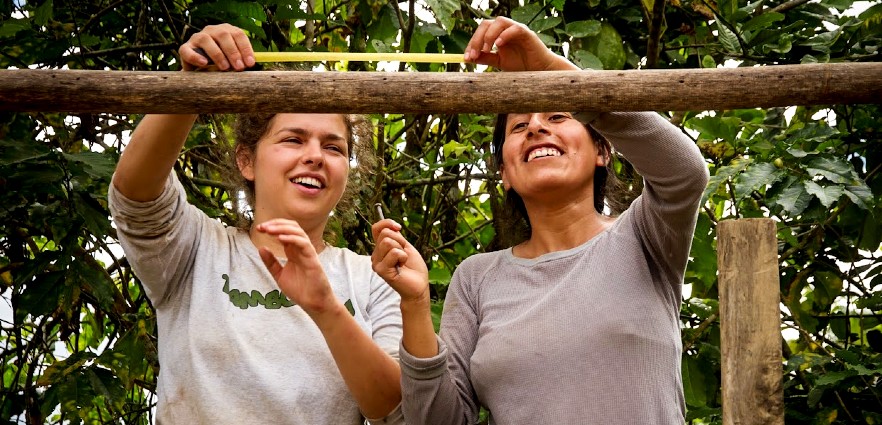Amazon Conservation in Peru - Additional Information
Volunteer itinerary and research projects
Volunteer itinerary
Placement durations:
- 2 week placement includes 15 nights’ accommodation
- 4 week placement includes 32 nights’ accommodation
- 6 week placement includes 43 nights’ accommodation
- 8 week placement includes 60 nights’ accommodation
- 10 week placement includes 71 nights’ accommodation
- 12 week placement includes 88 nights’ accommodation
We have set out the planned itinerary below for your first week, the specific schedule may change depending on the project needs and conditions at the time.
Day 1 – Arrival
- Meet a member of the team in Cusco
- Briefing on your schedule and transfer to your hotel; you will spend your first two nights in a hotel in the historic centre of Cusco
Day 2 – Cusco
- Meet the rest of your volunteer team
- Introduction to the project presentation
- Traditional lunch and short tour of Cusco
- Late afternoon free time to relax or explore the city
Day 3 – Transfer to the centre
- Start your journey early in the morning through the Andes mountain villages and countryside - which takes you to a height of 4,100 metres - before starting the descent through the lush cloud forest to the river
- You will stop in mountain communities and visit a special area in the cloud forest (known as a Lek) where stunning orange and black birds called ‘Cock of the Rock’ often congregate
- You will stay one night in a lodge in the cloud forest before the final leg of the journey to the research base the next day
Day 4 – Arrival at the centre
- Morning tour of a cocoa plantation
- Short walk to the river bank (carrying your bags) and travel down the river on boat
- Short steep hike up from the river to the centre and your accommodation
Day 5-6 – Inductions and training
- Receive inductions, conservation research training, an ecology walk, introduction to species ID and health and safety briefings (2 week volunteers receive a shortened training programme)
Volunteers who join the 2 week placement will assist with the conservation work, however they may not be able to get involved with all aspects of the research. Volunteer placements of 4 weeks+ will also receive Emergency First Response and further project training. If possible, we recommend staying for 4 weeks+ to be able to get involved in a greater range of research work.
Research projects
The project is located in the Manu Biosphere Reserve, a protective zone surrounding Manu National Park, one of the world’s most biodiverse hotspots. The research centre works in partnership with prestigious research bodies inlcuding the University of Glasgow, the Frankfurt Zoological Society, the Oxford University Environmental Change Institute (ECI), Andina University of Cusco, San Antonio Abad of Cusco and San Diego Global Zoo.
The project aims to answer the question: “how can regenerating rainforest contribute to sustaining and conserving rainforest life in all its diversity?”. By developing long term comparative studies they aim to understand how forests that have experienced different types and levels of damage can regenerate.
Current research projects which volunteers may be involved in include:
Blue Headed Macaw monitoring
The Blue-headed macaw has been classed as Vulnerable on the IUCN Red List, meaning it is threatened with extinction. Decreasing populations are thought to be due to a combination of exploitation for pet trade, loss of habitat through deforestation, gold mining and increase of human population. So far the team have found a decrease in the number of blue-headed macaws using the clay lick over the last few years, correlating with an increase in tourist numbers. The monitoring and education efforts hope to reduce disturbance to the macaws and allow ecotourism to make a positive contribution towards their conservation.
Volunteers take a short boat journey to a river island before dawn each morning to monitor the clay lick. They record the number and activity of parrots and macaws and any observed tourist impacts. They build a new observation area each year and develop interpretive information for tourists and guides about issues faced by this flagship species.
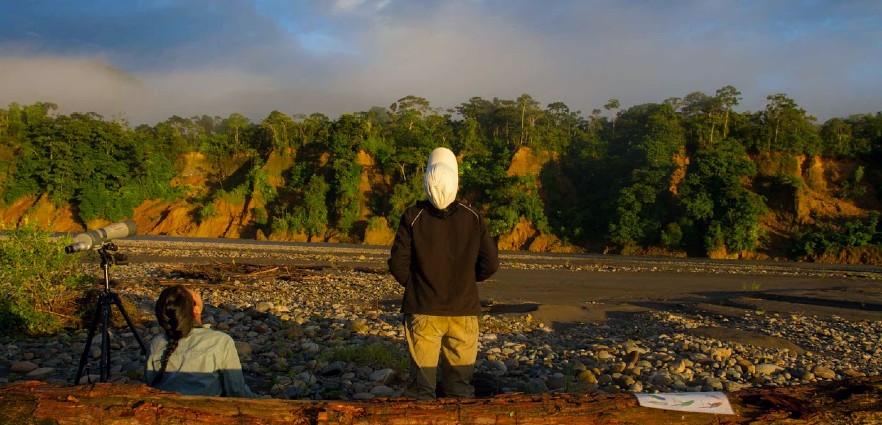
Mammal monitoring
The aim is to understand the importance of regenerating rainforests as habitat for different mammal species. Large mammals such as the jaguar (Panthera onca) are regarded as an umbrella species; a charismatic species of huge ecological importance that is often focused on when making conservation decisions and indirectly provides protection for less charismatic animals that share its habitat. So far more than 40 large mammal species have been recorded through survey methods such as transects, camera traps and tracking. The camera traps have suggested there have been 13 individual jaguars at the field site since 2010.
Mammal prints can be recorded during early morning surveys and through incidental sightings. Seasonal camera traps are also used to facilitate understanding of the way mammals use regenerating forests.
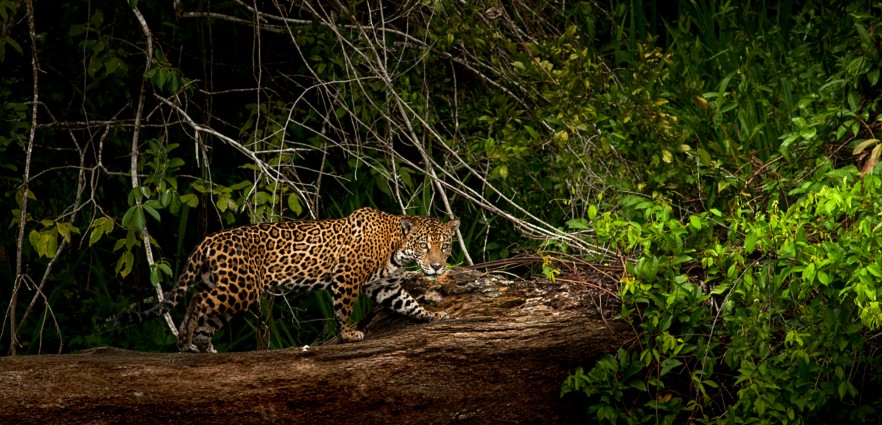
Avian monitoring
The field site location is one of the best places for bird watching in the world. Bird species composition and diversity can signify many different things about the forest, such as forest type, structure, age, health, and level and type of human impact. Hunting pressure and habitat fragmentation through roads and deforestation can affect bird populations. For example, healthy populations of game birds such as guans, tinamous and trumpeters indicate low to zero hunting pressure, whilst the presence of a highly specialist species such as the harpy eagle may indicate undisturbed primary forest. This is important as not only is the ecology of many of these tropical foothill species poorly known, but the true value of regenerating forest for birds is understudied.
Volunteers conduct early morning transects along the reserve to listen and look for birds.

Herpetology project (Amphibians and Reptiles)
Amphibians are excellent bioindicator species. They have very thin skin which they use for gas exchange, what makes them very sensitive to chemical pollutants and also to changes in climate (e.g. temperature and humidity). This means that they are one of the most important bioindicator species on the reserve, but it also means they are incredibly vulnerable, and are threatened by human activity the world over. Studying the way they use regenerating forest is therefore vital for assessing its conservation value.
In 2009, 28% of the world’s assessed reptile species were listed as threatened (Vulnerable, Endangered or Critically Endangered) and an additional 14% were listed as Data Deficient. Reptiles are greatly understudied, so the team are keen to help to improve the understanding of these important animals.
Volunteers carry out transect surveys, walking slowly along a 100m trail through the forest looking for amphibians and reptiles on leaves, branches or on the ground.
The team also conduct pitfall surveys, each of which consists of four 20 litre buckets dug into the ground, joined together by a wall of plastic sheeting. The team have made some fascinating discoveries whilst researching amphibians and reptiles and have already found some new species to the world, such as the Ameerega Shihuemoy frog!
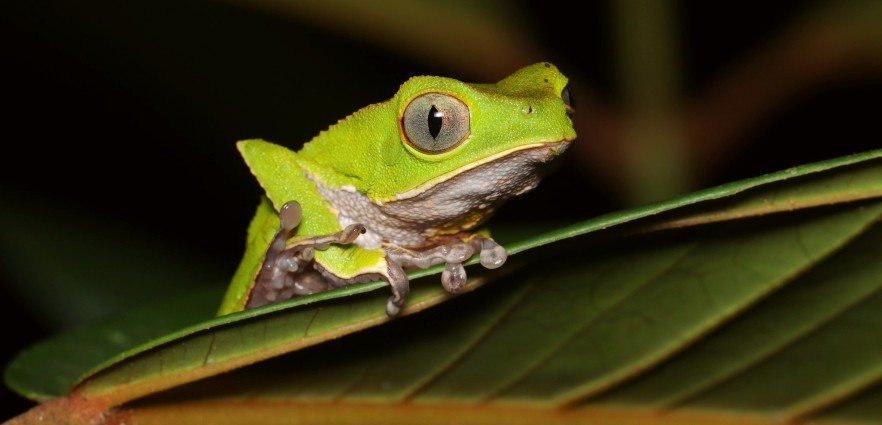
Butterfly research
Butterflies are significant bioindicators and are important in ecosystems as pollinators to many plant species. The work the team are doing is to create an inventory of the butterfly species at the field site, and gain an understanding of their distribution between the forest types that differ in their disturbance level.
Butterflies are relatively easy to sample and the fruit feeding Nymphalidaes are relatively easy to identify. They are good indicators of the quality of habitat and are sensitive to any changes, which means that they are an ideal indicator group to study when looking at regenerating forest. Comparing species presence and abundance in the forest gives a further understanding of the value of regenerating rainforest and different disturbance histories.
Volunteers set up butterfly nets baited with fermented banana at three heights in the three main forest types. Butterflies are retrieved from the net and identified using field guides created from species previously found at the site.
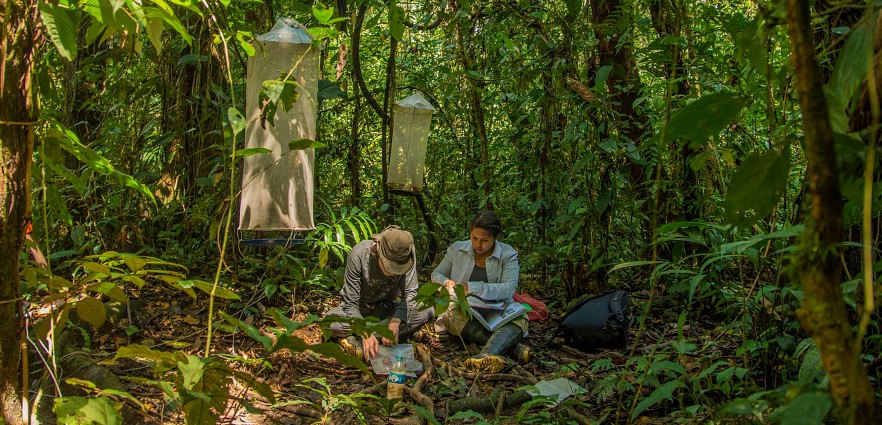
Community initiatives
The project works with the local community to create sustainable livelihoods and help improve the health and economic welfare of the families in the reserve while protecting and improving the rainforest environment. this is achieved through biogardens, agroforestry and capacity building.
